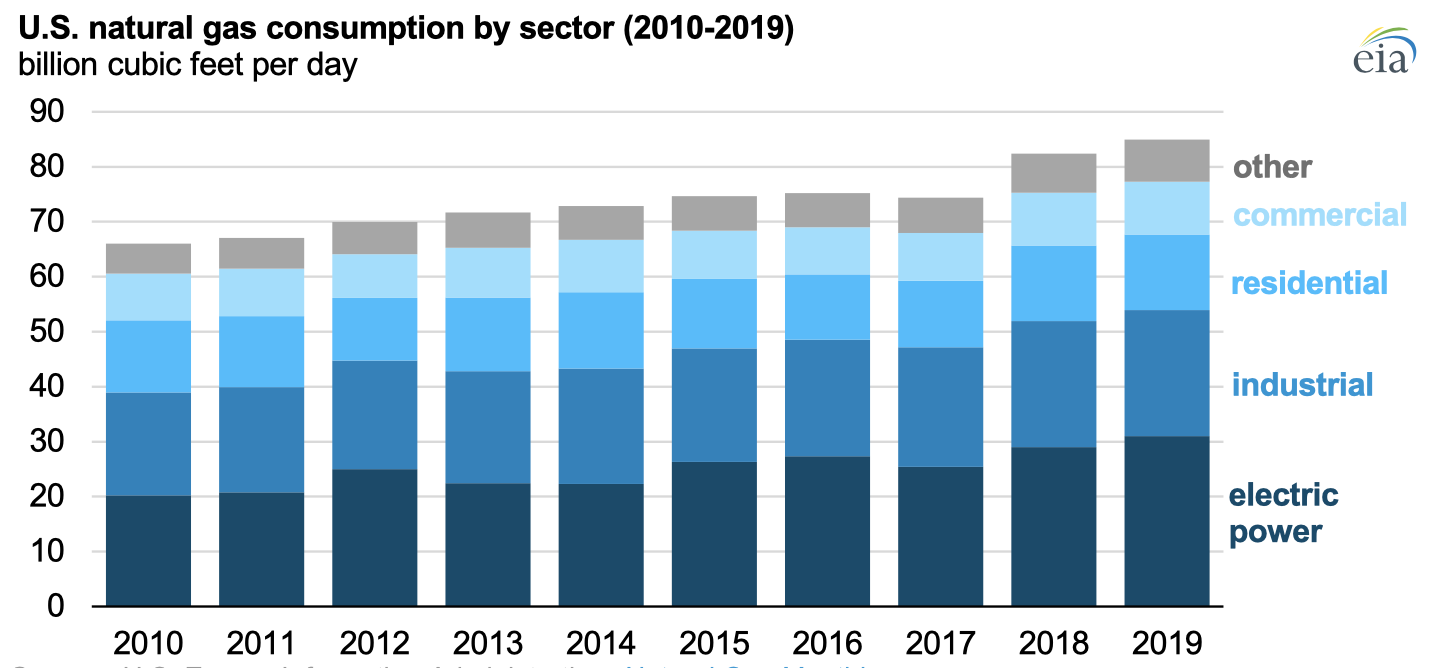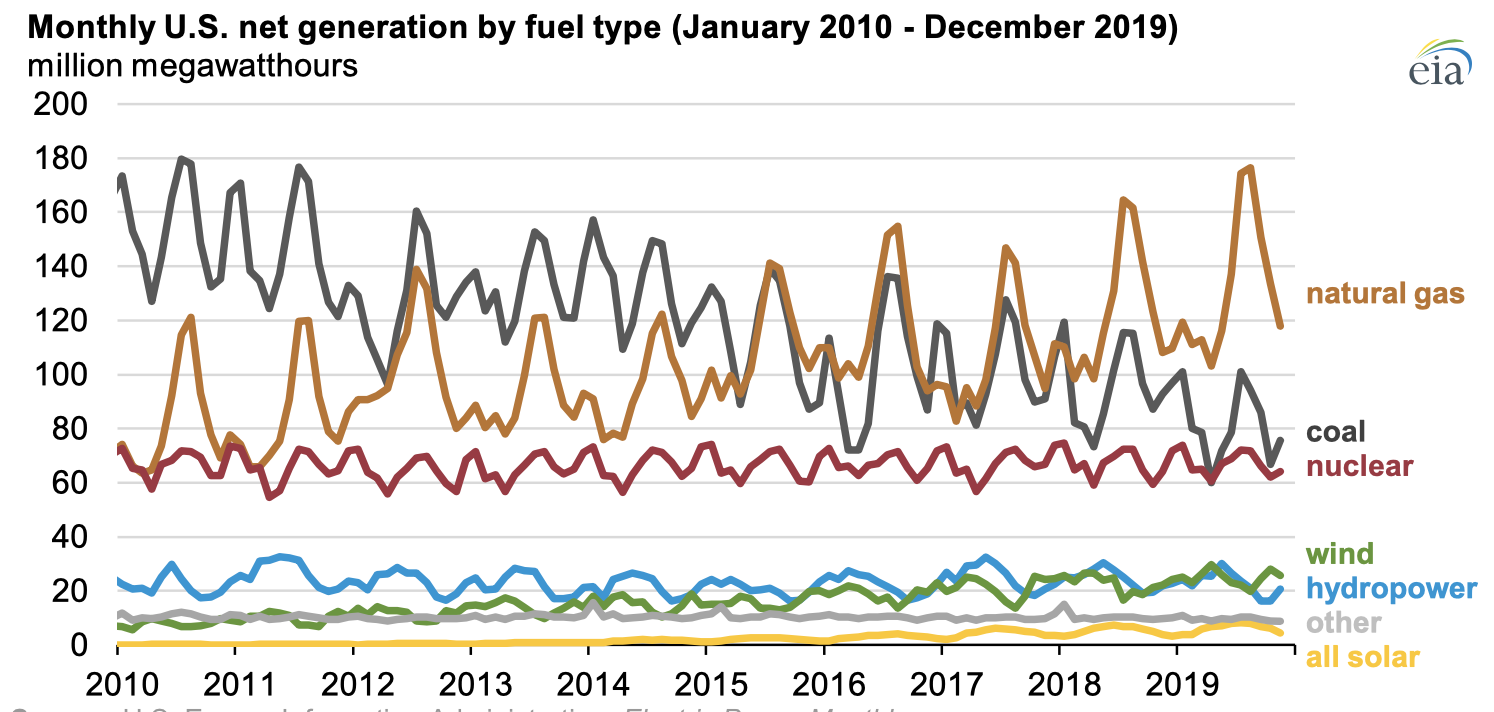U.S. natural gas consumption sets new record in 2019
Mar 03, 2020U.S. natural gas consumption increased by 3% in 2019, reaching a record of 85.0 billion cubic feet per day (Bcf/d), according to the U.S. Energy Information Administration’s (EIA) recently released Natural Gas Monthly. New natural gas-fired electric capacity and lower natural gas prices led the increase in domestic natural gas consumption.

U.S. natural gas consumption grew in the electric power sector by 2.0 Bcf/d, or 7%, but remained relatively flat in the commercial, residential, and industrial sectors. Exports by pipeline to Mexico and as liquefied natural gas (LNG) grew by 0.5 Bcf/d and 2.0 Bcf/d, respectively. In 2019, the electric power sector consumed 31.0 Bcf/d, or 36%, of total domestic U.S. natural gas consumption. Natural gas-fired electric capacity additions grew in 2019, especially in the PJM Interconnection, which serves the U.S. mid-Atlantic region.
Natural gas continues to account for the largest share of electricity generation after first surpassing coal-fired generation on an annual basis in 2016. In 2019, natural gas accounted for 38% of total electricity generation, followed by 23% for coal and 20% for nuclear. New natural gas generation capacity additions have continued to displace coal-fired power plants; about 5% of the total existing U.S. coal-fired capacity was retired in 2019.

Weather largely drives annual and monthly fluctuations in natural gas consumption. During the winter, U.S. natural gas consumption levels are at their highest because natural gas is the predominant fuel for space heating in the residential and commercial sectors. In 2019, demand for natural gas as a heating fuel was similar to 2018 demand.
Natural gas consumption has a smaller peak in the summer when demand for air conditioning, and therefore electricity, is greatest. In the summer of 2019, relatively high temperatures increased electricity usage and natural gas consumption. The United States set a monthly record for U.S. electric power sector consumption of 41.1 Bcf/d in July 2019, then surpassed that level to reach 41.6 Bcf/d in August. The electric power sector has been shifting toward natural gas in the past decade because of competitive natural gas prices and power plant technology improvements.
Principal contributor: Kristen Tsai
Similar Stories

Stena RoRo takes delivery of the battery hybrid vessel Guillaume de Normandie
View Article
WorldACD Weekly Air Cargo Trends (week 50) - 2024
View Article
Improved efficiency is enabling record U.S. crude oil production from fewer rigs
View Article
DAT: November truckload volumes lagged robust October
View Article
13.1% November increase for inbound boxes as volume gain strengthens
View Article
U.S. Department of Energy announces $7.1M in support of local energy project planning, siting and permitting
View ArticleGet the most up-to-date trending news!
SubscribeIndustry updates and weekly newsletter direct to your inbox!





